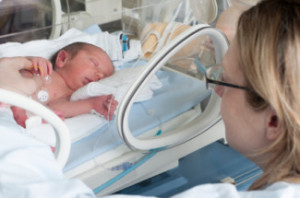Mysterious Birth Defects Cluster in Rural Washington Baffles Experts

 A three-county area in rural Washington is the site of an unsolved birth defects cluster, with at least two dozen babies in the Yakima area born with anencephaly. Health officials are stumped, having reviewed environmental and medical factors that might link the cases. Typically fatal to a child, anencephaly is caused by the failure of the neural tube to completely close around the spine while the fetus develops – a process that is normally finished at six weeks of pregnancy. Babies are born missing large parts of their skull and brain and seldom survive.
A three-county area in rural Washington is the site of an unsolved birth defects cluster, with at least two dozen babies in the Yakima area born with anencephaly. Health officials are stumped, having reviewed environmental and medical factors that might link the cases. Typically fatal to a child, anencephaly is caused by the failure of the neural tube to completely close around the spine while the fetus develops – a process that is normally finished at six weeks of pregnancy. Babies are born missing large parts of their skull and brain and seldom survive.
While exact numbers have yet to be released, the Centers for Disease Control and Prevention has recorded 23 infants born with anencephaly in the past three years in the tri-county area, a figure that is four times greater than the U.S. average. Since this figure was released in January 2013, some nine other babies with neural tube defects, including spina bifida, have been reported at the Yakima Valley Memorial Hospital by one of their genetics counselors.
Babies born with neural tube defects in Yakima area
Based on average national statistics, the CDC and public health officials anticipate only a couple of anencephaly cases among the 10,000 yearly births in Yakima, Franklin and Benton counties. Yet in 2012, officials found at least 12 incidents.
For many women in the tri-county area, they were completely unaware of the strange cluster of birth defects, until local media outlets like the Yakima Herald Republic reported on the CDC’s investigation. Officials claim there’s no secret contaminant being hidden from the public, and remind residents that, as heartbreaking as the birth defects are, the cluster may be nothing more than pure coincidence. Regardless, health officials are continuing their search for any underlying causes.
The Yakima Herald quoted Mandy Stahre, an epidemic intelligence officer at the CDC, who stated “We looked at education; didn’t see any differences. Didn’t see any differences in BMI (body-mass index, related to obesity). We looked at insurance status, country of birth of the mother. We looked at other health factors … We didn’t see anything [that linked the cases.]
A possible link between pesticides and birth defects
The CDC issued a report in September 2013, highlighting their investigation of 27 women who had children with neural tube defects in Yakima, Franklin and Benton counties between the years of 2010 and 2013. In the case study, 23 pregnancies were affected by anencephaly and three cases of spina bifida were recorded. Another infant was born with encephalocele – a serious neural tube defect in which a sac-like protrusion of the brain extends through the skull.
Despite research on each of the women’s backgrounds, state officials found “no common exposures, conditions or causes” for the birth defects. However, Washington residents are pushing for more exploration into the possible causes.
Prior research has demonstrated a causal link between birth defects like anencephaly and exposure to pesticides and molds, according to Allison Ashley-Koch. Koch, a Duke University Medical Center for Human Genetics professor, told NBC News that the Yakima area, being a key agricultural region, may spray its produce crops with pesticides containing nitrates – a potential risk factor for fetal birth defects.
Last year, research conducted by Texas A&M University Health Science Center found that mothers who had children with spina bifida were 50 percent more likely to ingest 5 milligrams of nitrate each day in their drinking water compared to mothers whose children did not suffer birth defects. Lead study author Jean Brender discovered that drinking water nitrate levels ranged widely, with private wells containing the highest amounts – up to 17.5 milligrams per liter.
These findings are cold comfort to rural Washington mothers like Andrea Jackman, who once lived near an apple orchard that was presumably treated with pesticide, and drank well water prior to her pregnancy. Her daughter Olivia was born with a severe form of spina bifida, and continues in her medical treatments at four months of age.


